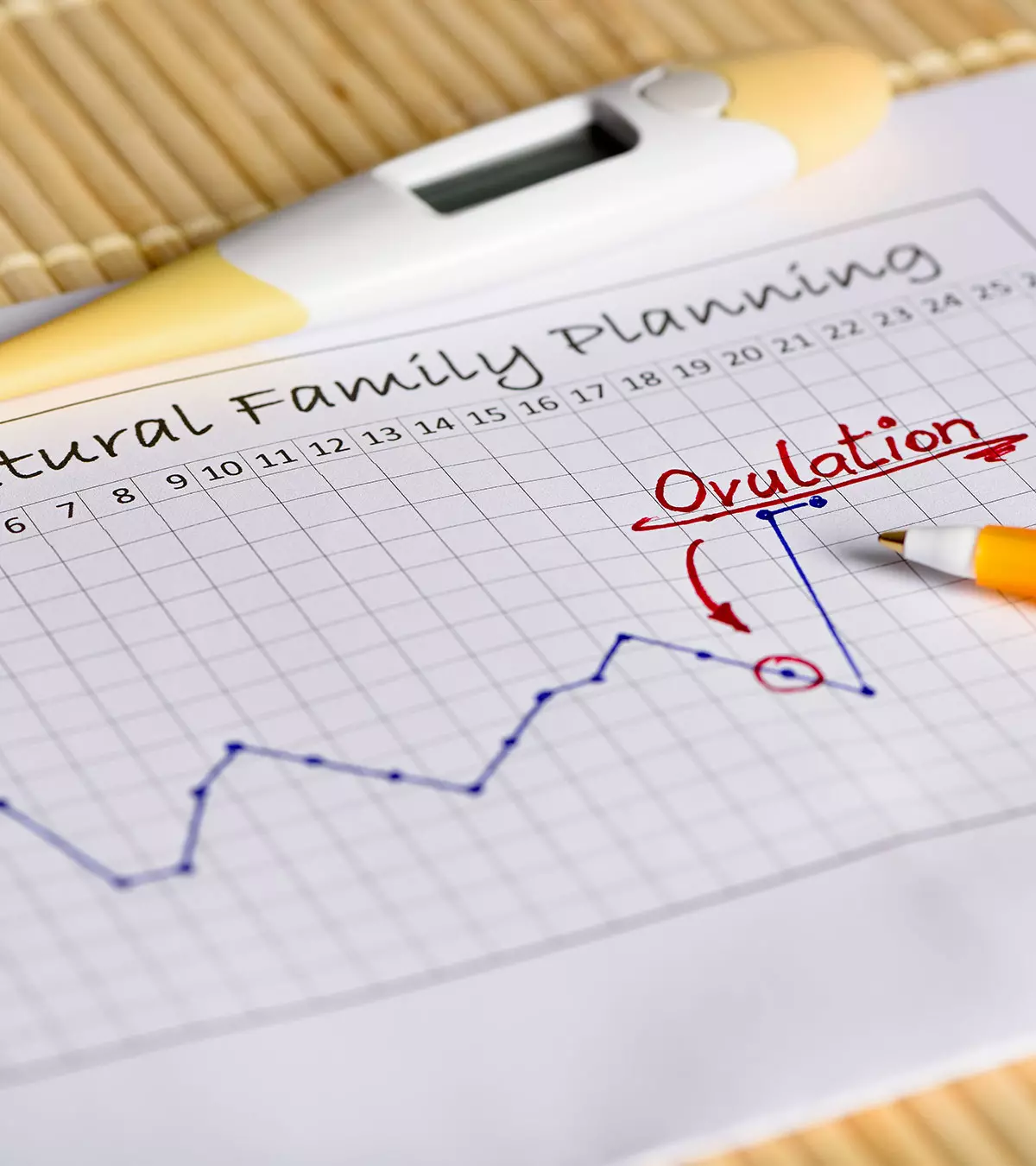

Image: Shutterstock
Meditation is a technique that helps you control your thoughts and release stress. Several pregnancy meditation techniques ensure that you stay healthy and happy throughout your gestation period.

Pregnancy is a unique and beautiful time, but it may sometimes give rise to fatigue, depression, and frustration. If you have been dealing with these feelings, meditation may help you feel relaxed and rejuvenated. Moreover, you can practice meditation at any time of the day. Even an hour of daily practice may enhance your thoughts and help you deal with challenges better.
Read this post to understand more about meditation, including its types, benefits during pregnancy, and ways to practice it.
What Is Meditation?
Meditation is a powerful technique than can transform your energy and stress level. Meditation is the practice of focusing on an object, word or image to control the thoughts and calm your mind. It is an integral part of yoga and is called “Dhyana” in Sanskrit. It helps you attain a balance between your body and mind.
Meditation can be as simple as taking deep breaths, in and out, during a quick washroom break at work. Or it can be sitting in some place at home for finding inner peace, letting go and clearing your mind. It can also be a silent walk in nature, while consciously breathing and being present in the moment (1). It is significant for the pregnant woman to pay attention on how she feels after each relaxed session.
Can You Meditate While Pregnant?
Yes, you can meditate during pregnancy as it not only reduces your stress but can also give your baby a better start in life. Meditation techniques can keep you healthy, relaxed and energized, thereby providing the focus you need for easy labor. It plays a vital role in tackling difficulties that arise in various stages of pregnancy (2).
Is Meditation Safe Throughout Pregnancy?
Yes, it is safe to meditate throughout your pregnancy and also during childbirth. Meditation helps you manage emotions better and also promotes overall well-being (3). Practicing meditation during early pregnancy can reduce anxiety and stress at the time of labor, and meditation during the second trimester can significantly reduce pains you experience in the third trimester. But in the third trimester, try not to stress yourself trying to meditate in a specific posture or for a specific duration. Meditation reduces risk factors during pregnancy by keeping stress levels low and gives a healthier environment for the fetus to grow.
What Are The Benefits Of Meditation For Pregnancy?
Meditation, when done along with proper diet, prenatal supplements, and basic exercises, can help you stay healthy and strong when you are pregnant.
1. Gives happier babies:
Research reveals that babies born to mothers who practiced meditation during pregnancy have a better disposition. They can self-regulate themselves and rarely get affected by negativity (4). Giving birth to a healthier baby can make your transition to parenting more relaxed.
2. Higher chances of going full term:
Another study revealed that women who participated in mindfulness training program had almost 50% fewer chances of giving preterm delivery than women who had taken no mindfulness programs. A full-term pregnancy allows the baby to develop fully and she can have a good start in life (5).
3. Reduced stress and anxiety levels:
Practicing meditation on a regular basis can lower your stress, anxiety, and any other fears you have about pregnancy and labor. With meditation, you can be more relaxed within, irrespective of the external circumstances. The more relaxed and easygoing you are, the less stressful the labor or birthing process will be. Also, constant stress can have adverse effects on you and the unborn child (6).
4. Pain management during labor:
A study revealed that the intensity of labor pain decreased by almost 40% among a group of pregnant women who attended a four-day mindfulness meditation program. Pain reduction is not only helpful during labor but is also essential for postpartum recovery (7).
5. Boosts immunity:
Meditation improves the body’s immune function. The enhanced resistance can, therefore, keep your body healthy and protect the baby from immune-related disorders after birth (8).
Meditation also helps you:
- connect with your innermost feelings
- deal with mood swings
- attain focus and concentration
- bond with your baby
- feel good about our body
- improve self-awareness
- stay calm and relaxed (9)
8 Most Effective And Popular Pregnancy Meditation Techniques
There are eight different forms of meditation that pregnant women can practice. They are:
1. Vipassana meditation:
This helps you become aware of the present state, and focus inwardly so that you will achieve heightened awareness of how you feel inwards and outwards. The actual meaning of the term is ‘to see things the way they are’ (10).
2. Sound meditation or mantra:
This uses a particular prayer, sound or phrase such as ‘Om’ to focus on. Chanting the Omkara creates vibrations in the body that aim at balancing the energy centers (chakras) of the body (11). You can also try chanting other words such as ‘So-ham’, ‘yam’, or ‘ham’.
Did you know that there is also power in our thoughts and words? When you talk or think of something, it affects your nervous system and also how you are as a person. Having your own mantra, also called positive affirmations, is a good idea. So, create your own mantra, such as ‘breathe in for baby, this is a strong mama breath’, it permeates your self-consciousness and allows you to truly absorb the words’ powerful meaning that can help you through a difficult pregnancy or labor.
3. Breath awareness or deep breath meditation:
This focuses on your breath and to observe its pattern. It eases muscle tension, lowers heart rate and helps you fall asleep. You can also put your hand on your bump to feel the rhythmic breathing.
Lie down with your feet shoulder-width apart. Close your mouth and breathe slowly through the nose. Your stomach rises as the air goes into the lungs and diaphragm. Hold for a second and then exhale through the nose. From the second trimester or when you start feeling uncomfortable lying on the back, you can change the position to resting sideways, with a pillow between your legs (12).
4. Concept meditation (Guided meditation):
This involves visualizing an object. It can be a blue sky, waves of the sea, a crystal, flower, pebble, a leaf or your growing baby. Learn to focus on the quietness stimulated by the imagery and meditate and stay focused (13).
For instance, visualize the blue sky and how the clouds pass. The tranquil images can create some peace and silence within you. Likewise, you can also imagine a pebble and focus on its color, texture, and shape to build your concentration and mindfulness.
5. Walking meditation:
It helps calm your restless mind. Choose a place to walk and concentrate on your breathing and its pace (14). This is also effective for labor, which enables you to focus on delivery by keeping you mobile and active.
6. Deep belly meditation:
Place your hands on the growing bump and gently cradle the baby. You can feel a warm sensation in your palms. Breathe in and out slowly. If any thought arises in your mind, allow it to pass. Practice this for about five minutes every day, and increase the duration with each week (13).
7. “Third eye” meditation:
The space on the forehead between your eyebrows is called the “third eye” Behind this area is the pineal gland which regulates the wake-sleep patterns and it is very sensitive to light. The pineal gland also produces serotonin, which is known to affect the energy levels responsible forfeelings of well-being and happiness. When you are under stress or labor, close your eyes and try to focus on the third eye. This helps you relax the muscles around the forehead (13).
8. Progressive muscle relaxation:
Mastering this technique takes time. However, you will find that progressive muscle relaxation helps as the pregnancy progresses and when getting a good night’s sleep becomes difficult.
Lie down on the floor or your bed. Try to tense the muscles and allow them to relax slowly. Focus on one group of muscles at a time and keep alternating between the right and left sides. You can also start by tensing and releasing the hand, followed by a the hand, followed by a forearm, and then shoulder, your face, chest, stomach, legs, and finally feet (15).
Meditation might seem safe to do without much practice or supervision, but you can reap the maximum benefits if you are following some guidelines.
Guidelines For Pregnancy Meditation
Follow these measures while meditating during pregnancy:
- Learn the meditation techniques from an experienced practitioner.
- Practice meditation every day, preferably at the same time. Early morning is the best time for it.
- Choose a quiet place where you won’t be disturbed. If it is indoors, use a room with proper ventilation. You can also select an area in your garden or balcony.
- Sit with your spine straight and erect.
- Start with eight to ten minutes, and then extend your meditation time as needed.
- Do not meditate when you are tired or after you’ve had a heavy meal.
- Always follow the meditation with a stretch of deep relaxation (also called yoga nidra).
Frequently Asked Questions
1. How can I be mindful during pregnancy?
Mindfulness is moment-to-moment awareness of one’s thoughts, feelings, and sensations without judgment. Pregnant women can practice mindfulness by following different practices such as yoga, journaling, meditation, and deep breathing.
2. How do I meditate during labor?
You can meditate during labor the same way you have done during pregnancy. For instance, you can do deep breathing exercises while sitting comfortably in the bed, birth ball, or chair. You can also play soothing music and try visualization to relax using positive imagery. Whatever technique you follow, the key is to practice it early in pregnancy so that you can do it during the painful childbirth process.
Thoughts on delivery and pregnancy-related discomfort maybe because of stress and anxiety during pregnancy. Practicing meditation may help you filter your thoughts and calm your nerves. The above-listed pregnancy meditation techniques are safe to perform during pregnancy. They require you to sit in a comfortable position and let you focus on your breath. Include them in your daily routine and discontinue their practice if you feel uncomfortable or there is a muscle strain. However, if you find the process helpful, you may also practice guided meditation taught by professionals.
References
- Meditation: In Depth.
https://www.nccih.nih.gov/health/meditation-and-mindfulness-effectiveness-and-safety - Annie Hughes et al.; (2013); Mindfulness approaches to childbirth and parenting.
https://www.ncbi.nlm.nih.gov/pmc/articles/PMC3846392/ - Meditation: A simple fast way to reduce stress.
https://uhs.berkeley.edu/sites/default/files/article_-_meditation_a_simple_fast_way_to_reduce_stress.pdf - Ka Po Chan; (2014); Prenatal meditation influences infant behaviors.
https://pubmed.ncbi.nlm.nih.gov/25063985/ - Marion I van den Heuvel et al.; (2015) Maternal mindfulness and anxiety during pregnancy affect infants’ neural responses to sounds.
https://www.ncbi.nlm.nih.gov/pmc/articles/PMC4350490/ - C Vieten and J Astin; (2008); Effects of a mindfulness-based intervention during pregnancy on prenatal stress and mood: results of a pilot study.
ttps://pubmed.ncbi.nlm.nih.gov/18317710/ - Fadel Zeidan et al.; (2011); Brain Mechanisms Supporting the Modulation of Pain by Mindfulness Meditation.
https://www.ncbi.nlm.nih.gov/pmc/articles/PMC3090218/ - Richard J Davidson et al.; (2003); Alterations in brain and immune function produced by mindfulness meditation.
https://pubmed.ncbi.nlm.nih.gov/12883106/ - Larissa G. Duncan et al.; (2017); Benefits of preparing for childbirth with mindfulness training: a randomized controlled trial with active comparison.
ttps://www.ncbi.nlm.nih.gov/pmc/articles/PMC5427564/ - Vipassana Meditation: reconnecting the mind-body matrix – A personal perspective.
https://citeseerx.ist.psu.edu/viewdoc/download?doi=10.1.1.537.9667&rep=rep1&type=pdf - How chanting deepens your yoga practice.
https://www.artofliving.org/yoga/off-yoga-mat/yoga-and-chanting - Relaxation techniques: Breath control helps quell errant stress response.
https://www.health.harvard.edu/mind-and-mood/relaxation-techniques-breath-control-helps-quell-errant-stress-response - Breathing Exercises & Visualization.
https://www.beaumont.org/treatments/breathing-exercises-visualization - Walking Meditation.
https://meditofoundation.org/meditations/walking-meditation - Azam Sadeghi et al.; (2015); The effect of progressive muscle relaxation on pregnant women’s general health.
https://www.ncbi.nlm.nih.gov/pmc/articles/PMC4700682/
Community Experiences
Join the conversation and become a part of our nurturing community! Share your stories, experiences, and insights to connect with fellow parents.
Read full bio of Dr. Irene (Eirini) Orfanoudaki
Read full bio of Rebecca Malachi














